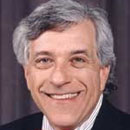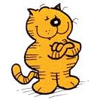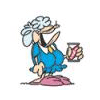Inside the ark
Even though I am retired, every Jewish New Year I preach a sermon at my synagogue, Temple Beth Torah, in Melville, N.Y., and I cut it down drastically and summarize it in my weekly column. This helps my readers (both of them) know what is on my mind during these Jewish High Holy Days of Rosh Hashanah and Yom Kippur. It also helps my congregants, who were sleeping when I preached this sermon, know what I said.
Inside the ark
I have been engaged in a multiyear quest to explore the symbolism of the objects that were once located in the Temple in Jerusalem. Last year I preached about the menorah. This year I turn to the holiest object stored in the Temple, the aron ha-kodesh, the holy ark of the covenant.
The ark was a box made of acacia wood overlaid by gold (approximately 52-by-31-by-31 inches). On top of the ark were two statues of winged angels called cherubim whose four wings shielded their eyes and the ark below. No one, except for perhaps Steven Spielberg, knows where the ark is now.
What was in the ark? Well, in addition to the Ten Commandments, there were other things that most people don't know about. According to various biblical texts, there were three things in the ark, which are listed in this old text in Hebrews 9:4, "The ark of the covenant [was] covered on all sides with gold, in which was a golden jar holding the manna, and Aaron's rod, which budded, and the tablets of the covenant." This passage from the New Testament is confirmed by several passages from the Hebrew Bible: Exodus 16: 31-34 and Numbers 17: 8-10.
The jar of manna, the Ten Commandments and the flowering staff of Aaron were precious and each was a symbol: The manna was something to live from. The tablets of the law were something to live by, and the flowering staff was something to live
The manna was sustenance in the desert. It was bread of a sort. The manna reminds me of Gandhi's insight, "To a poor man, God is bread." There are many lessons folded into Gandhi's simple dictum. The first is that we must not let our faith outpace the misery in the world. Hunger is basic and if we do not address hunger, nothing else we do for God makes sense. That is why Father Tom Hartman and I spent so much time and energy working with the food rescue network here on Long Island.
And it is not only in soup kitchens on Long Island that the miracle of manna is repeated every day by holy people who are birthing God's miracles into this wounded world. I was in Israel once visiting a school for Jewish kids from Ethiopia. I kneeled down next to a young boy who was drawing a picture of a smiling dog. I asked him his name and he said "Moshe." I asked him why the dog in his picture was smiling and Moshe said to me, "Because I don't have to eat him." The manna is what we live from to keep our bodies and our souls alive.
As you know, the tablets in the ark were the second set of tablets brought down from Sinai. Moses had smashed the first set after descending the mountain the first time and seeing the people worshipping the golden calf. According to legend, Moses was commanded by God to pick up every single shard of the first set of broken tablets and put them into the ark along with the whole second set.
As I grow older, I think more and more about the broken tablets. They remind me of my broken parts.
...continued
(c) 2019 THE GOD SQUAD DISTRIBUTED BY TRIBUNE MEDIA SERVICES, INC.






